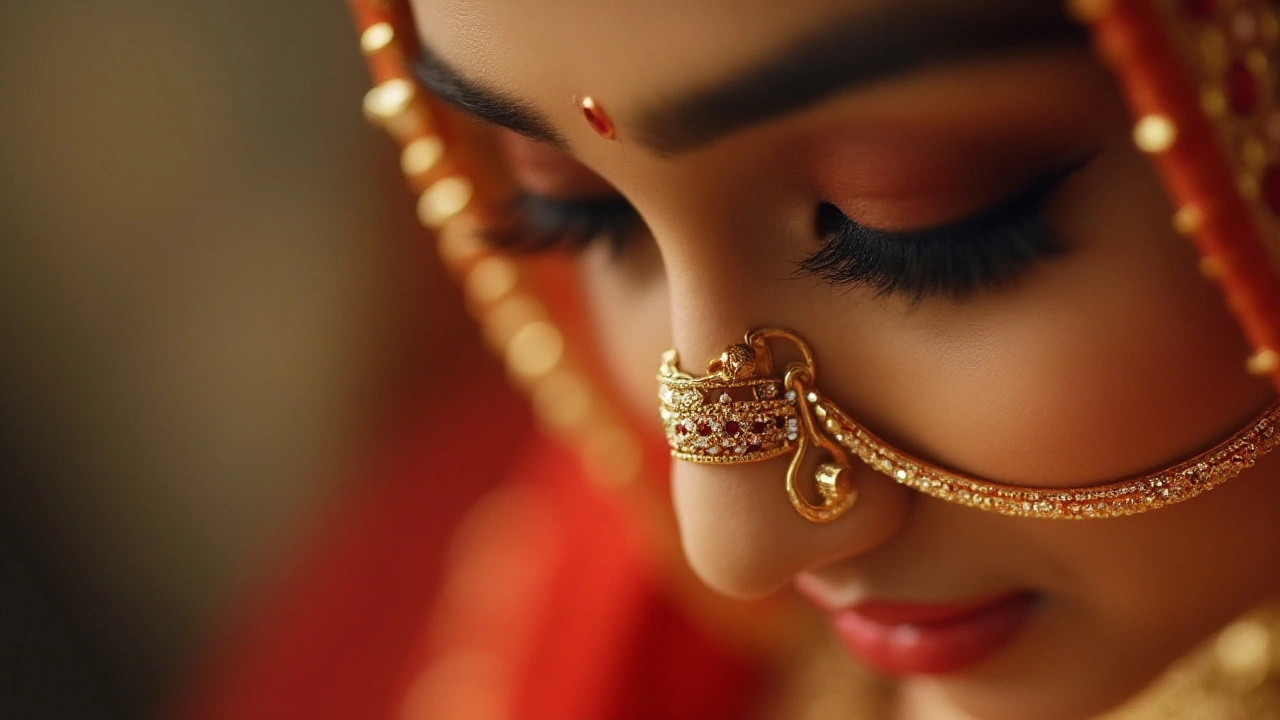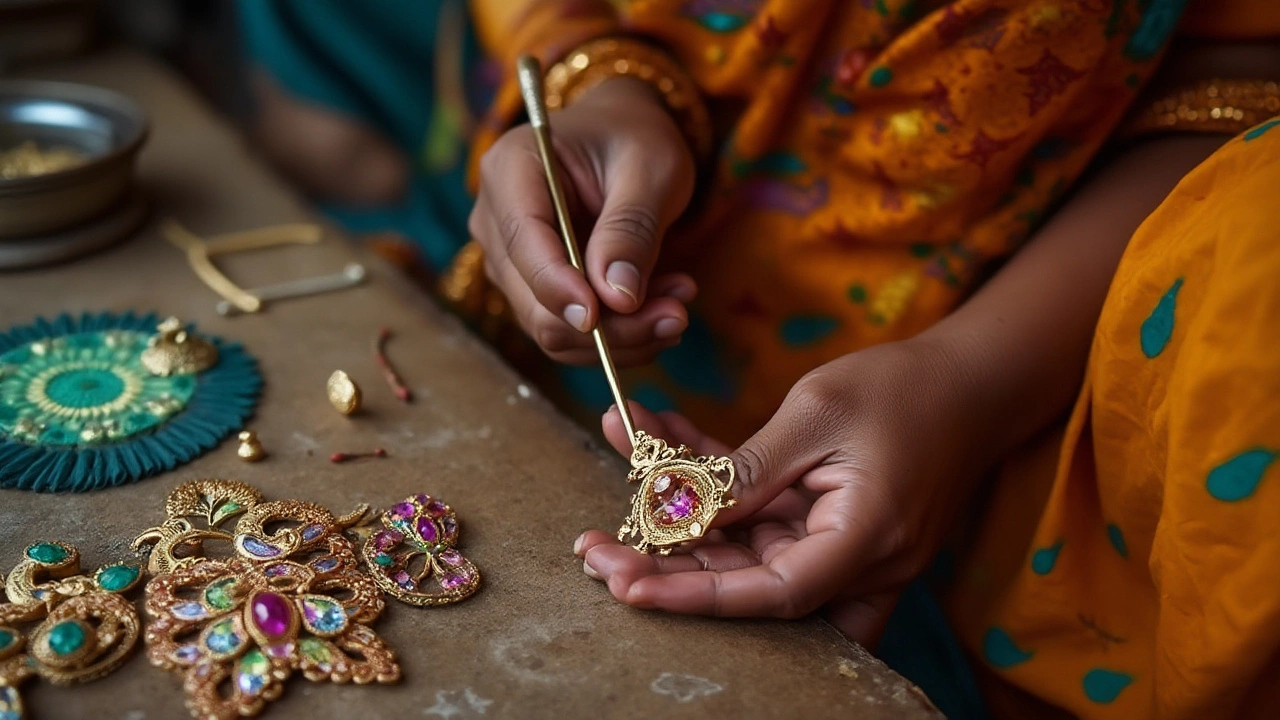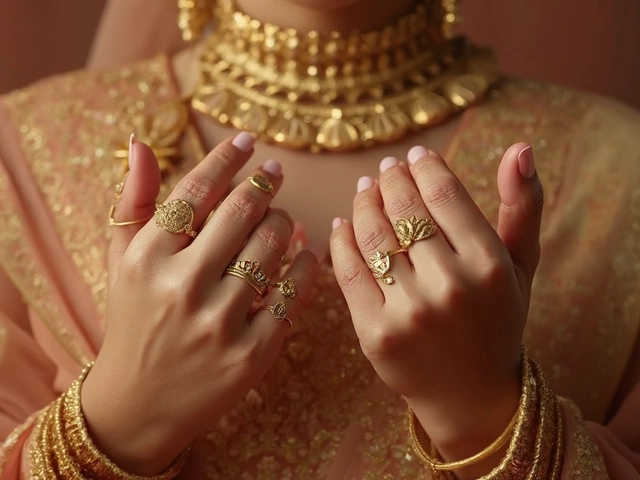
Nose pins have enthralled people for centuries, blending cultural heritage with contemporary fashion. Yet, a common intrigue remains: how do these delicate pieces stay affixed so securely?
From their origins, nose pins have evolved significantly, and understanding the various designs can be both charming and enlightening. While traditional types boast intricate craftsmanship, modern innovations have introduced a realm of new possibilities.
This article delves into the types and mechanics of nose pins, revealing how they remain steadfast, so you can choose the perfect style with confidence and ease.
- The Basics of Nose Pins
- Traditional Nose Pin Types
- Modern Innovations in Nose Jewelry
- Tips for Selecting the Right Nose Pin
The Basics of Nose Pins
The allure of nose pins has long transcended mere fashion trends, embedding them deeply into the tapestry of cultural symbols and personal expression. These seemingly simple pieces of adornment serve as both traditional and contemporary statements. At the core, a nose pin is a small piece of jewelry designed to be worn on the nose, particularly on the nostril. Its size and design can vary greatly, from tiny delicate studs to elaborate and ornamental pieces, each carrying its own story and significance.
Traditionally, nose pins have held particular cultural importance in regions such as South Asia and the Middle East, where they are often associated with marital status and rites of passage. Historically, references to nose pins have been found dating as far back as 4,000 years in the Middle East, before making their way to the Indian subcontinent in the 16th century. This influx was primarily due to the Mughal influence, a dynasty known for their opulent taste in jewelry. In India, for instance, the wearing of a nose pin is traditionally associated with conveying respect to Parvati, the Hindu goddess of marriage, aptly showcasing the intersection of culture and personal decoration.
Designs of nose pins evolved over time, influenced by regional styles and preferences. In these regions, nose rings and pins can symbolize social and economic status. The complexity of the nose jewelry is often an indicator of wealth, while the materials used can signify community and familial ties. For instance, in many South Asian cultures, gold is a preferred metal due to its perceived purity and auspiciousness. It's not just appearance that plays a significant role, but the types of nose pins vary, including the ‘stud’, ‘hoop’, and the ‘screw’. Each type employs a different mechanism to stay in place, addressing the everyday concerns of wearing such small adornments.
"Nose pins, as small and dainty as they are, carry the weight of centuries of tradition and personal identity. Each pin tells a story of the person who wears it." — Amrita Bala, Jewelry Historian
The utility of nose pins also evolved, and today, these accessories are appreciated globally. This expansion can be credited to the greater acceptance and fascination with other cultures’ fashion and traditions. With this in mind, when selecting a nose pin design, it’s important to consider the lifestyle of the wearer and the occasion for which it is chosen. A well-selected nose pin can not only complement a person’s features but also harmonize with their personal style while honoring its rich history. Understanding the cultural connotations and practical designs of nose pins can make this decision as intentional as it is beautiful.

Traditional Nose Pin Types
Traditional nose pins are steeped in history, offering stories and symbolism that stretch back for centuries. These pins are more than mere adornments; they are cultural emblems that have graced the faces of millions, particularly in regions like South Asia and the Middle East. The nuances in their design often reflect the customs, beliefs, and artistry unique to each culture, making them precious both as accessories and as ethnic markers.
The screw-type nose pin is perhaps the most well-known among traditional styles. Known for its security and comfort, this type features a twisted end that screws into the nostril, ensuring a snug fit. It's been a staple choice for those who wear nose jewelry every day. The intricate designs that often accompany these pins demonstrate a high level of craftsmanship, turning each piece into a miniature work of art. Sometimes crafted in gold and embellished with tiny gemstones or enamel work, these nose pins narrate tales of elegance and tradition.
Another significant traditional form is the hoop nose ring, which adds a bold yet graceful touch to one's appearance. This style is prominent in various cultures, often symbolizing marital status or social standing. Its circular design metaphorically represents eternity and life cycles, deeply resonating with cultural philosophies that honor the interconnectedness of life. In Hindu and Ayurvedic traditions, wearing a nose ring on the left nostril is believed to ease the pain of childbirth, given the connection of this nostril to reproductive organs.
The nath is one extraordinary type of traditional nose jewelry that has captured the attention of many. Often worn during special occasions and wedding ceremonies, the nath is typically larger than the average nose pin and is sometimes connected to the hair with a chain, creating a dramatic statement. It's a symbol of beauty and grace but also conveys a woman's familial bonds and commitments. The nath's origin can be traced back several centuries and is intricately tied to the rituals and cultures it represents.
Renowned jewelry historian Dr. Alice Birkenblad states, "In studying the traditional nose pins, one unravels a tapestry of cultural narratives, where each piece holds a unique voice within the continuum of history."
While these designs have ancient roots, they are embraced even today for their timeless allure. The delicate balance between the allure of vintage aesthetics and the functionality of these designs makes them irreplaceable in the ever-evolving world of fashion accessories.
A table of common traditional nose pin materials and their historical significance:
| Material | Significance |
|---|---|
| Gold | Prosperity, wealth, and divine blessings |
| Silver | Purity, protection, and energy |
| Diamond | Strength, invincibility, and beauty |
Exploring traditional nose pin types is not only a journey into diverse artistic expressions but also an encounter with the rich cultural heritages they encapsulate. Each twist, each gem, tells a story of a time, a place, and a people, universally binding wearers to their roots while allowing them to express individuality through age-old magnificence.

Modern Innovations in Nose Jewelry
In recent years, the world of nose jewelry has been invigorated with modern innovations that cater to the tastes and convenience of contemporary wearers. While traditional nose pins have their undisputed charm and cultural depth, new designs push the boundaries of creativity and practicality. One such innovation is the magnetic nose pin, which eliminates the need for piercing altogether. These clever designs use opposite magnetic forces to secure the pin in place, making them ideal for individuals who wish to adorn a nose pin temporarily or avoid the discomfort of a piercing.
Magnetic nose pins often feature bold and trendy designs, sometimes studded with sparkling gemstones or intricate patterns. They're especially popular among younger audiences seeking versatility and style without permanent commitment. The non-invasive nature of these pins offers freedom, allowing individuals to experiment with different looks at their leisure. According to a survey conducted in early 2023, the demand for magnetic nose jewelry rose by an impressive 25%, reflecting a shift towards more flexible fashion choices.
"Nose jewelry today is about self-expression and the intersection of traditional beauty with modern lifestyle demands," noted renowned jewelry designer Anya Kale.
Clip-On Nose Pins
The advent of clip-on nose pins also marks a significant shift in the market. These pins employ tiny clasps that gently secure the jewelry onto the nose. Favored for both their comfort and simplicity, clip-on designs are a great alternative for those hesitant about piercings. They're often crafted using hypoallergenic materials, ensuring they are safe for sensitive skin types. The versatility of clip-on designs means they can be worn in various settings, from casual outings to more formal events, offering a seamless blend of fashion and ease.Push and Pin Types
For many fashion-conscious individuals, push and pin types offer a middle ground. These innovations require a small piercing but allow for easy interchangeability and security. A stem holds the nose pin in place, and it's available in straight, screw, or L-shaped styles, each providing a unique way of securing the jewelry. Materials like titanium and 14k gold lend durability and allure, ensuring these innovations remain in vogue.The confluence of tradition and modernity in nose pin designs is truly remarkable, offering something for every preference and occasion. Whether opting for the temporary charm of a magnetic piece or the secure elegance of a push-in pin, today's consumers have a dazzling array of choices that expand the possibilities of personal style.

Tips for Selecting the Right Nose Pin
When it comes to choosing a nose pin, the process can be as personal as selecting your wardrobe. The right design not only enhances your facial features but also complements your personal style and lifestyle. To start, consider the design that best suits the occasion. For everyday wear, a simple gold stud provides elegance and subtlety, while a diamond nose stud might be perfect for special events that require a touch of sparkle.
Another crucial factor to keep in mind is the type of metal used in the nose pin. Those with sensitive skin may opt for hypoallergenic materials like surgical steel or titanium, which reduce the risk of irritation. Size matters, too; if the nose pin is too small, it might feel uncomfortable, whereas an overly large one might overshadow other features. Remember to take into account the gauge of the piercing, which affects whether certain pins will fit properly. A snug fit is key to ensuring the pin stays in place securely.
The ease of insertion and removal also plays a significant role. Various types of nose jewelry like L-shaped, screw, or hook designs offer different levels of simplicity when putting them on or taking them off. This is especially important for those who frequently change their jewelry or engage in physical activities and need a sturdy option that won't easily dislodge. As William Turner, a famed jeweler once noted,
"The true mastery in jewelry lies not only in its beauty but in the harmony between aesthetics and comfort."
Budget can also influence your decision. While it's often tempting to lean towards inexpensive options, it’s worth investing in quality pieces that are durable and long-lasting. High-quality craftsmanship ensures the longevity of your nose pin designs and can help prevent loss or breakage, leading to fewer replacements over time. In some cultures, the cost and craftsmanship of a nose pin also reflect one's social status or heritage, making it a symbolic as well as aesthetic choice.
Consider Cultural Significance
It's essential to acknowledge the cultural significance of nose pins in your choice. In many cultures across South Asia and the Middle East, wearing a nose pin is more than just a fashion statement; it's tied to cultural and traditional values. Therefore, your choice of design might align with these nuances, a nod to appreciation and understanding of its deeper meaning. You might choose motifs that resonate with your ancestry or personal beliefs, making the process of selection all the more meaningful.
Practicality Over Aesthetic
Practicality should never be underestimated when selecting the right nose pin. Active individuals might prefer a flat-back or internally-threaded design that minimizes snagging on clothes or during activities. The weight and security of the pin are important, as heavier pieces might be unsuitable for prolonged wear or certain activities, while a more intricately designed pin might be prone to getting caught.
To summarize, whether it’s the type of nose jewelry, the material, budget considerations, or cultural significance, the right nose pin should resonate with your personality and practical needs. By following these considerations, you ensure that this timeless piece of jewelry not only enhances your look but also stands the test of time in your collection.


